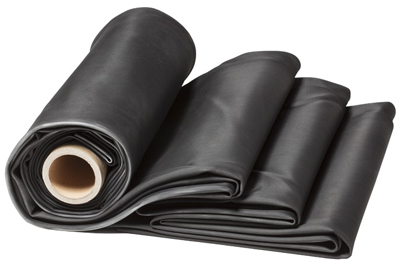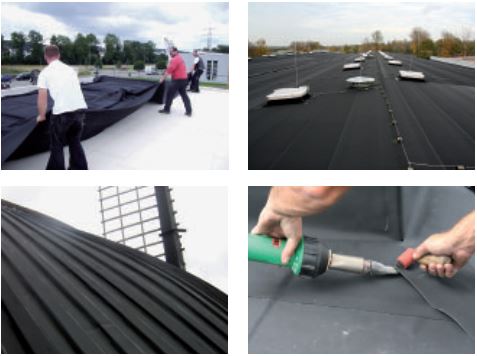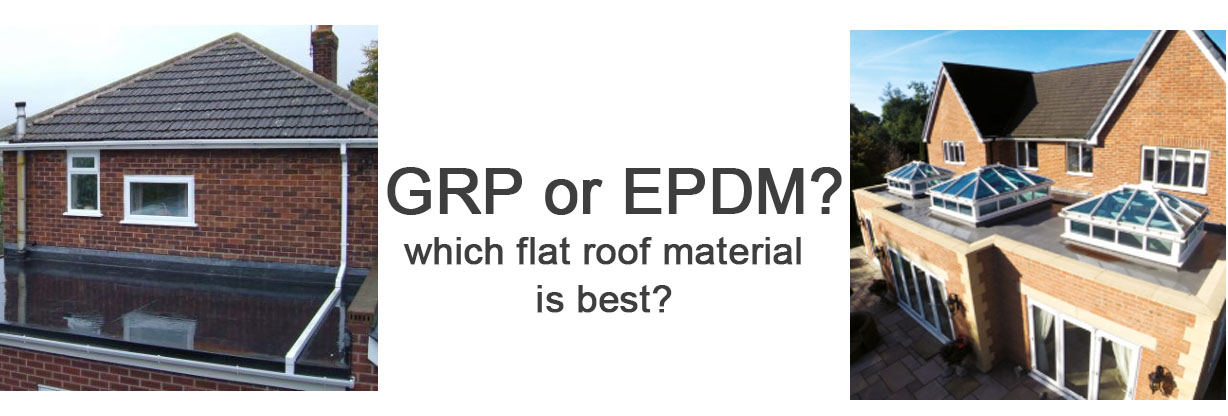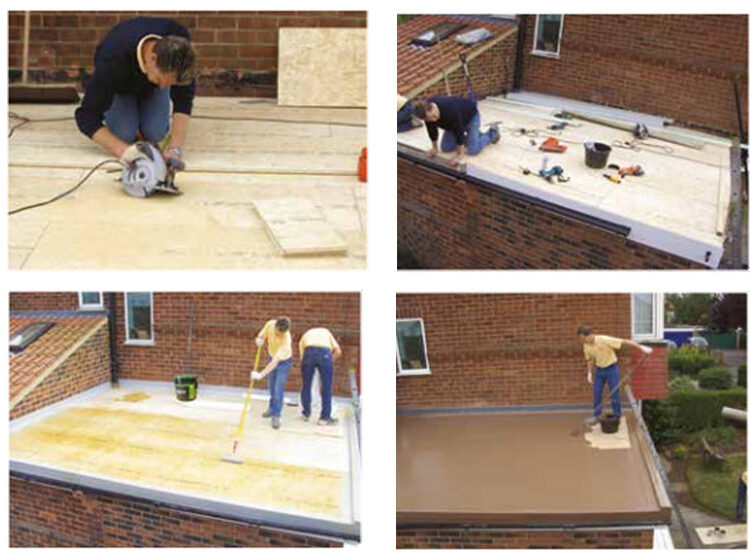From garages and extensions to outbuildings and commercial buildings, flat roofs are used on a variety of projects with several different methods and materials. However, arguably the most common flat roof materials are GRP and EPDM – but which is best?
Both EPDM and GRP flat roofing have been around for over 50 years, but recent developments in the methods of application among other things have resulted in the growth in the popularity of EPDM and GRP roofing.
Here at Roofing Superstore, we’ve covered a host of the most common flat roofing-related queries and some of the key points to consider to help you decide which flat roofing material is best for your project.
Table of contents:
- What is EPDM roofing?
- What is GRP roofing?
- Physical composition
- Roof longevity
- Installation processes
- Roofing repairs
- Roof appearance
- Cost
What is EPDM roofing?
EPDM stands for ethylene propylene diene monomer and is a form of rubber roofing. It is an extremely durable material and comes in rolls ready to be applied to the roof area.
What is GRP roofing?
GRP stands for glass-reinforced plastic and is also referred to as fibreglass roofing. GRP is composed of resin with glass or fibrous strands that reinforce the roofing material. Although the resin is a liquid, a catalyst is applied which starts a curing process to turn the liquid into a solid over a short period.
Physical composition
EPDM roofing
EPDM is a rubber-like material, which means that it is flexible. This means that EPDM roofing can be used on roofs that have uneven structures, or structures such as skylights, pipes and gutters without any issues. The rubber material is not easily broken, meaning it will not be damaged by falling items or other impacts. This flexibility also reduces the potential for cracks to appear because its flexibility allows for expansion and contraction – Firestone EPDM can expand by up to 300% in length and then return to its original size.
Additionally, EPDM roofing is breathable, but impermeable, meaning moisture and heat can escape from the roof, but moisture, smoke and other vapours cannot enter the roof space. This helps prevent moisture build-up in the roof which can lead to damp, rot and structural damage.
EPDM is incredibly waterproof and is used in a number of applications as well as roofing because of its waterproofing qualities, such as seals and pond liners. It is also resistant to saltwater, meaning it can be used on properties near the coast with no adverse effects.
GRP roofing
One of the main benefits of GRP roofing is that it has an incredible strength-to-weight ratio. This means that less material is required to provide good strength properties. GRP also has several unique properties which result in it being able to be moulded to almost any shape, around and over irregular roof shapes and uneven structures.
GRP is incredibly resistant to corrosion, meaning that it can be installed on roofs near factories and commercial buildings that handle chemicals.
Roof longevity
The expected lifespan of an EPDM rubber roof is around 25-30 years, which is similar to GRP roofing. Neither roofing product has seams, which increases the roof’s longevity as this is where most roofs fail due to leaks if seams are not sealed properly or wear out.
EPDM roofing has an elasticity which means that thermal movement, contraction and expansion do not lead to cracks or splits in the roof.
GRP is extremely waterproof and is used in a range of marine applications such as on the hulls of boats. EPDM is also waterproof and used in valves, seals and pond liners.
Neither EPDM nor GRP is affected by the sun – unlike other flat roofing materials, blistering, cracking and rotting do not occur due to the sun. Additionally, GRP is the least likely roof material to develop moss.
Installation processes
EPDM roofing
EPDM rubber roofing comes in pre-made rolls, ready to be rolled out across the roofing. A relatively simple installation process, EPDM roofing involves a single sheet of a rubber-like material. This is glued to a roof decking and then fitted with trims around the edges. An EPDM roof kit can be purchased complete with key items needed for installation.
EPDM roofing can be installed by DIYers as well as professionals, as long as the installation instructions from manufacturers are followed. If an EPDM roof is installed incorrectly, it can cause serious problems. So only install it if you are confident in each step of the process.
GRP roofing
GRP roofing has a slightly more complicated roofing process as it involves more than simply laying rolls of material. To install GRP roofing, you add a layer of resin, then a mat of fibreglass strands, and then another layer of resin. A topcoat is then applied to create a weatherproof surface. There are many GRP roof kit solutions available to ensure you have key items for installation.
The inclusion of a number of resins and catalysts can make GRP installation more challenging, but it can still be undertaken by competent DIYers. The disadvantage of GRP roofing installation is that it can only be installed in completely dry weather, which can be a challenge.
Roofing repairs
EPDM roofing
Repairing small holes or tears in EPDM roofs is relatively quick and easy. You can purchase a number of EPDM roof repair kits. As a result, rubber roof repair can be as simple as applying a patch over a damaged area or applying a sealant product to the damaged section.
GRP roofing
Repairing GRP roofing can be a little more complicated due to the material used, but can also be patch repaired. Patch repair kits can be purchased that are specific to GRP roofing for long-term fixes. Alternatively, roof repair kits can be used for short-term fixes. Patch repair kits can include sanding down the area and applying a new chopped strand mat, with resin and a topcoat, whereas short-term roof repair kits tend to involve the application of an acrylic sealant.
Roof appearance
EPDM roofing
An EPDM flat roof is not always popular due to its aesthetics – it just looks like a large piece of rubber on top of a roof. However, this is down to personal preference. A number of people do not have an issue with the appearance of an EPDM roof, particularly as it isn’t often visible from the ground.
GRP roofing
The appearance of a finished GRP roof is one of its biggest draws. Clean, seamless and available in a range of colours, the fibreglass roof has an aesthetic appeal.
Cost
EPDM roofing
EPDM is relatively affordable and made from recycled material which can bring the cost down further. The tools required to install EPDM roofing are relatively generic. This means it is likely that you do not need to purchase tools for the installation process. Additionally, the flexibility and elasticity of EPDM roofing mean that damage is unlikely, which keeps maintenance and repair costs low.
GRP roofing
In comparison, GRP roofing requires several more specialised tools and products, which results in a more expensive flat roofing material. Furthermore, if unsure of the installation process, it is recommended to have GRP roofing installed by a professional, which increases the overall costs. However, the likelihood of GRP roofing requiring repair is much lower than with more traditional roofing. So less money would be spent on repairs.
So, which is better?
This depends on your needs for the task ahead. If you’re looking for something low-cost and easy to install, EPDM is the solution for you. For those who want something with more durability and a better look, GRP is ideal.
Today the products are simpler to use AND better in terms of economic standpoints. Both have their own matching qualities that make them good, as well as unique ones to ensure there is more than one option available to suit various needs.
So how do you choose whether EPDM or GRP roofing is best for your flat roof? As we’ve outlined, there are several points to consider, especially as both flat roofing options are high-performing and offer many benefits. If you need further help or advice, our team is always ready to help – call 01752 692 760 or use the live chat.
















